Vladi S. Travkin, 
 Natalya N. Bolotina
Natalya N. Bolotina 

The Annals of Frontier and Exploratory Science
Vladi S. Travkin, 
 Natalya N. Bolotina
Natalya N. Bolotina 


 Hierarchical Scaled Physics and Technologies (HSPT), Rheinbach, Germany,
Denver, CO, USA
Hierarchical Scaled Physics and Technologies (HSPT), Rheinbach, Germany,
Denver, CO, USA

 University of Applied Sciences, Rheinbach, Germany
University of Applied Sciences, Rheinbach, Germany
up to
INTRODUCTION
The hydrogen element and its physical features topic is thoroughly deliberated in Conventional Orthodox Homogeneous Physics (COHP) for at least many decades, especially since 1920s when the need for serious research was obvious in atomic physics.
Since 1920s there was developed a huge amount of COHP explained physics of hydrogen and data related to hydrogen physics itself and use, interaction of hydrogen with a great amount of substances and in technologies.
Meanwhile, the silently kept features are just hidden from even observation, let alone the study.
We won't and cannot describe the great amount of knowledge regarding the
hydrogen physics when hydrogen and its physical interactions in various
technologies are revealed via the scaled hierarchical vision. That is the
hydrogen that has the simplest atom and the simplest molecule, but shown in
COPH as the solar system reminding structure (planetary) when the imaginable
electron(s) is circling around of "indefinite structure" nucleus of spherical
shape, when unification of atoms in hydrogen molecule is explained via the
same circling imaginary fantasy. While the magnetic and electric properties
and features of

 atoms and
H
atoms and
H
 molecules are explained with the highly artificial and approximate mathematical
tools of QM, QFT, etc.
molecules are explained with the highly artificial and approximate mathematical
tools of QM, QFT, etc.
We would start with the theory of structured hydrogen atom, electron, proton,
nucleus, molecule mostly following the developments by Ph.M. Kanarev in
particle and atomic physics those we have found as the most advanced at this
time in physics. Then we proceed to physics of electron arrays based on the
HSP-VAT methods for Maxwell-Heaviside-Lorentz and Galilean electrodynamics,
H
 molecule arrays (gas) dynamics (not the molecular dynamics (MD) of homogeneous
physics) when we accept the ideas and vision of the nature of one and many
electrons and molecules in the determined volume. Those issues are different
than in COHP explained hydrogen physics phenomena, while the hierarchical
scaled approach allows contemplating the known phenomena at present at each
scale of considered physics, homogeneous and/or heterogeneous.
molecule arrays (gas) dynamics (not the molecular dynamics (MD) of homogeneous
physics) when we accept the ideas and vision of the nature of one and many
electrons and molecules in the determined volume. Those issues are different
than in COHP explained hydrogen physics phenomena, while the hierarchical
scaled approach allows contemplating the known phenomena at present at each
scale of considered physics, homogeneous and/or heterogeneous.
For example, if in scaled physics the electron arrays should be and can be undoubtedly considered as the number of electrons as of the sub-atomic particles, not a cloud of mathematical mass-points, in the aether, in the medium, not in the vacuum that has, nevertheless, the electrodynamics properties? If a medium is empty - means nothing inside of a volume, it should not have any properties by the logical and philosophical definitions.

Electron in 3D - shown without the surficial movements and magnetic momentum and a spin, that is following.
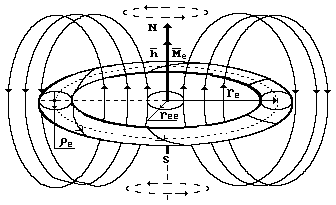
Electron in an aether - Kanarev, Ph.M.

Proton in 3D - without its magnetic momentum and surface dynamics.
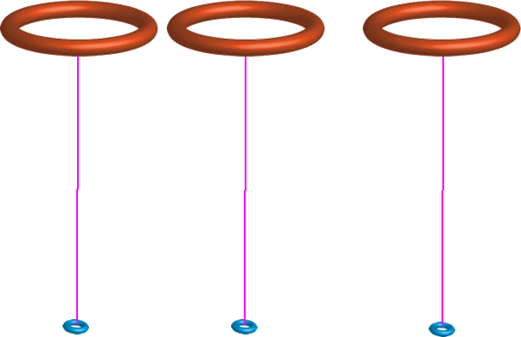
Hydrogen atoms - not a correct scale used in a figure, otherwise it will go beyond the page.
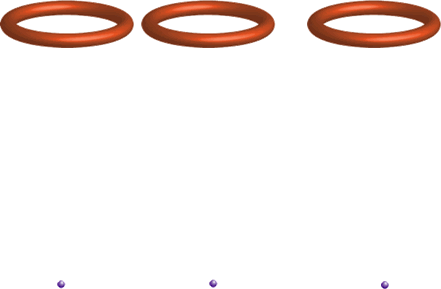
Hydrogen atoms with simplified nucleus drawing - not a correct scale used in a figure.
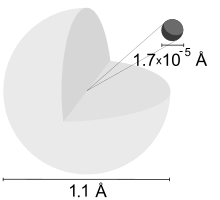
Hydrogen atom shown in Wikipedia - What a difference? Unbelievable.
Then, we concerned to the never considered problem (well, it was considered either simplistically or bluntly incorrect regarding the mathematics and physics statement), of what are the properties of such an array if it is moving in space (aether) while particles (electrons, protons) explicitly have dynamics or due to initial impulse or due to external electromagnetic fields (while this definition of electromagnetic field needs to be specified additionally to get to more strictly and openly stated meanings) - we will enumerate a number of simplifications taken in COHP for that kind of problems for accelerators, when even the governing equations are written incorrectly, with unrecognizable simplifications.
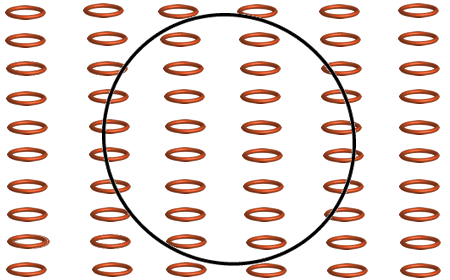
An array of ordered electrons in dynamics. To theorize and model this array the COHP methods are artificial, so the modeling of particles swarm in particle accelerators is pretty simplified, while dynamics equations are incorrect.
The hydrogen gas properties can be shown have obvious and straightforward definitions and models for their simulation, while we need shortly to address the existing homogeneous theories (homogeneous by nature of accepted methods for gaseous medium as being homogeneous in COHP for actual heterogeneous polyphase (at least three phases - gaseous molecules, CMBR and an aether) problems of gaseous media in a volume).
-on468x280.gif)
Hydrogen molecules at moderate temperatures and pressure - hydrogen gas (ortho- and para-hydrogen molecules) in a volume. Anyone can point out to a specific misrepresentation(s) in the figure?
We guess, that the COHP education won't allow to point out - What's wrong with this picture? Wrong not in terms of COH chemistry - that is OK, but the molecules are not the balls or similar structures. What a change. We are talking about the polyscale chemistry.
Besides, the methods of COH physics do not allow to model and simulate this gas in a vessel. The COHP MD can not treat this gas, with these molecules.
Regarding the hydrogen bonding that plays so great role in explanation of multiple, huge amount of chemical, biological, and technological phenomena with the explanation of the bonding as in the following figures (from internet, and remember that here is the educational web resource):
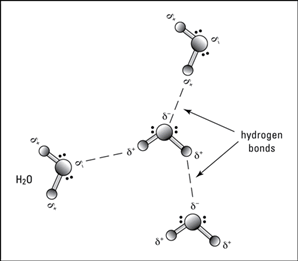
Hydrogen bonding in COHP - Wrong teaching to students. First of all, there is no such of water molecules as the COH physics and chemistry draw for education in school and university textbooks. Oh god, how many errors in them.
The second, there is no such a "hydrogen bond" kind as is depicted in this and millions of similar drawings of water molecule and hydrogen bonding in substancies.
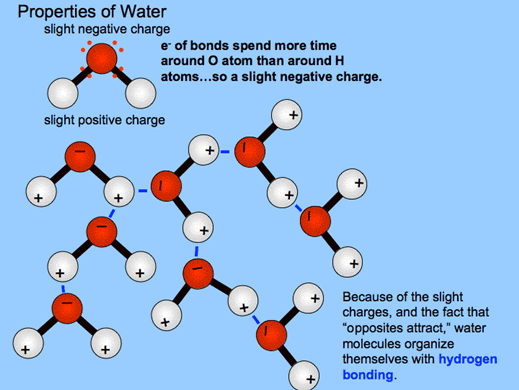
Hydrogen bonding in water, COHP - Wrong explanation of phenomenon to students.
Then we should fully reconsider the educational curriculums and in chemistry as well. Poor students.
Additional note: to understand the approach and methods of HS (hierarchical scaled) physics at atomic and sub-atomic scales used in this chapter (section) readers need to go through some of the already known and published for more than 45 years the ideas, definitions, methods developed and explored in this physics, that is the covering of COHP, such as those mostly relevant to the particle physics and atomic physics.
The strict arguments in a favor of naturally appealing physical disciplines are spelled in our - "Electrodynamics 2":
Some general initial statements and conditions for functioning of sub-atomic physics on the base of physical observation and experiments first of all, we discuss at the introductory to the Polyphase-Polyscale particle physics. As long as the other COHP theories developed for the sub-atomic particles actually support the main assumptions of QM, we won't spend a lot of time on them - because we will need to repeat the arguments already stated in our introductory -
and
and
and
and
Well, this is a lot of content in these articles that is supported by many facts, including experimental, and theories.
1. Kanarev, Ph.M., "A Model for the Free Electron," Galilean Electrodynamics, Vol. 13, No. S1, pp. 15-18, (2002)
2. Kanarev, Ph.M., Photon, http://www.micro-world.su/ Folder "Books"; retrieved 05/05/2013
3. Kanarev, Ph.M., Nuclei of Atoms, http://www.micro-world.su/ Folder "Books"; retrieved 05/05/2013
4. Kanarev, Ph.M., Answers to Microworld Questions, http://www.micro-world.su/ Folder "Answers"; retrieved 05/05/2013
5. Kanarev, Ph.M., Introduction to New Electrodynamics, http://www.micro-world.su/ Folder "Books"; retrieved 05/05/2013
6. Kanarev, Ph.M. , The Foundations of Physchemistry of Microworld. Monograph. The 15th edition, http://www.micro-world.su/index.php/2010-12-22-11-45-21/139--i; retrieved 05/05/2013
7. Travkin, V.S., Electrodynamics 2 - Elements 3P (Polyphase-Polyscale-Polyphysics), http://travkin-hspt.com/eldyn2/index.htm, (2013)
8. Travkin, V.S. and Bolotina, N.N., "Quantum Chemistry, Physical Chemistry, Molecular Dynamics Simulation, DFT (Density Functional Theory), and Coarse-Graining Techniques Applied in Structural, Cellular Biology, Polymer Science and Implication for Scaleportation," Journal of Alternative Energy and Ecology, No. 2, pp. 58-75, (2011a)
9. Travkin, V.S. and Bolotina, N.N., "Pseudo-Scaled and Scaled Description and Scaleportation of Inorganic and Organic Polymer and Polymer Composites Properties," Journal of Alternative Energy and Ecology, No. 1, pp. 62-77, (2011b)
10. Travkin, V.S. and Catton, I., Transport Phenomena in Heterogeneous Media Based on Volume Averaging Theory, in Advances in Heat Transfer, Academic Press, New York, Vol. 34, pp.1-144, (2001)
The following material will describe and explain in more or less simple text the scaled subjects regarding hydrogen as a gaseous medium (at moderate temperatures and pressure):
Access to manuscript may be obtained for qualified parties. Apply for authorization.
================================================================================Almost any information displayed here is the proprietary information in the area of "Hydrogen in HS Physics".
This is also the well known problem - still can not be solved within the Homogeneous One-Scale particle physics, atomic physics, chemistry theories.
![]()

![]()